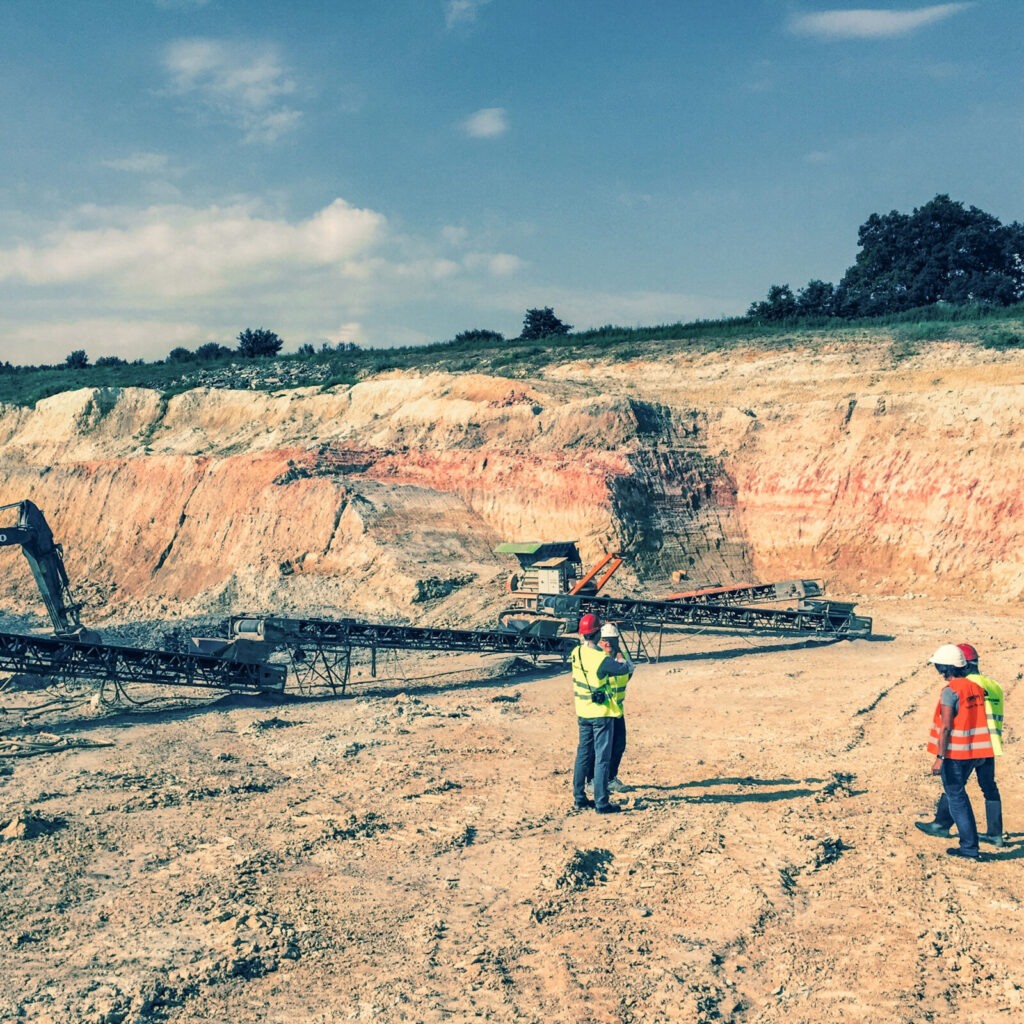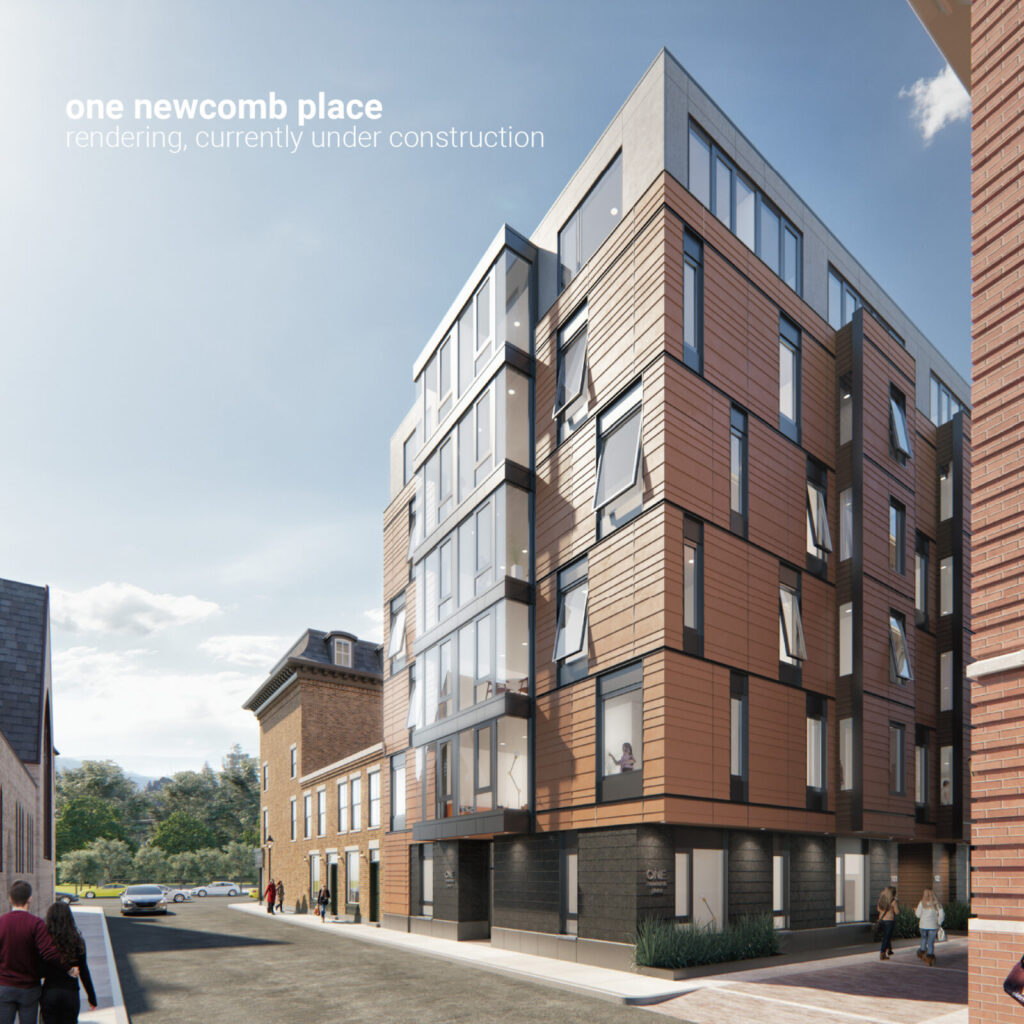A custom rainscreen system designed by MFDS.
MFDS has been busy with R&D on unique façade cladding system designs. For One Newcomb Place, currently in construction, we designed a custom application of NeaCera Terra-cotta Rainscreens working closely with Avenere Cladding, the manufacturer. After touring their factory in Germany and meeting with their team, we took the base NeaCera Cascade configuration that used single height stacks and reformatted the vertical support profile to accept different height panels to create a unique variated product. The terra cotta is currently onsite and waiting to be installed, see the images below to see our process of research, design, and development of a custom system configuration.

The project was originally conceived as a fiber cement clad design as a cost effective solution, but MFDS researched various terra cotta manufacturers and systems to find Avenere Cladding, who offered a promising product and system that was cost competitive and far more visually appealing and robust.


When visiting the factory, we saw the potential of the cascade system configuration and its streamlined kit-of-parts. The team at Avenere were willing partners in exploring a custom support profile pattern – and given the variability of the system and the ease in which Avenere was able to implement it, the system may be offered as a product going forward as a configuration option.

Avenere’s excellent quality control meant very tight finish tolerances that provide crisp lines in the finished façade – which was critical in our new design that utilized varied panel heights that would have slightly different clearances and overlap from panel to panel.

Our custom design allows different height panels to stack and overlap to create a seamless pattern that repeats at every floor using standard panels height and without cutting any down to fit. The standard system using uniform heights would have had to have custom cuts or would not have registered with floor lines.

The base system offered is comprised of three pieces: the panel, the support profile, and the joint insert. We customized the support profile to accept varying panel heights, relying on the manufacturer’s tight finish tolerances to make the overlap tolerances work given the different panel heights have slight changes in overlap angles and clearances.

A simple change in modifying the support profile allows the system to still be cost effective while providing a substantial aesthetic impact with the varied panel heights. Designing the panel variation to repeat at every floor also allowed the support profiles to be manufactured in a single piece, furthering the ease of installation in an already minimal single wall support system.






